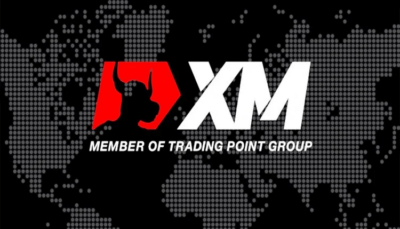Contents
Cyclical stocks took a hit in 2020 as people tightened spending in the first half of the year. Shareholders, some investors take long-term holds in these stocks and expect dividend checks every three months. They have little to no competition in the areas where they operate, and local governments regulate most of their prices. Much like the oil companies, the industrials generate lots of cash flow and have stable dividends. If defense budgets around the world are increasing, you can bet that more cash will be flowing to the defense companies in this sector. Here’s how GICS works and its 11 sector classifications, including some top companies in each.
The industrials sector includes companies across a wide range of different goods and services. Knowing the different stock market sectors can give you a greater understanding not only of your own investment portfolio, but of the stock market as a whole. Below you can find a description of each of the 11 stock market sectors, as well as the largest companies within them. A stock market sector is a group of public companies that share similar business activities, products and services, or characteristics. Keep reading to learn what stock market sectors are, and why you want to include some of them into your investment portfolio.
Last % change is the nominal change in the price of the index from the previous trading day's close expressed as a percentage as of the index value at the time noted in the Date & Time field. 1 Year % Change is the nominal change in the price of the index from previous trading day's close and tio markets trading day close 1 year ago. Chart Performance enables you to chart and change performance timeframe of the percent change for the indices as well as the ability to add a user-entered symbol. Chart Performance figures may vary slightly due to different timeframes used in the calculation.
Example of companies in this sector includes big names like Microsoft Corporation, Oracle Corp., and Mastercard Inc. This sector has seen a lot of change in recent years because of the rapid rise in technology-based companies. Under the same thinking of diversifying risk by owning multiple companies within the sector, you can also select a sector-themed mutual fund. These are professionally managed both passively and actively, depending on the theme. Mutual funds allow you to own many positions in the sector so that a single stock disaster won’t hurt as much with the risk spread out. The downside of mutual funds include the lack of transparency when buying or selling since you don’t know the price until after the close.
Information technology also includes makers of semiconductors and the’’ equipment used to produce semiconductor chips. The energy sector includes some of the largest energy companies in the world, such as Exxon Mobil and Chevron . As the name suggests, the newest addition to the S&P sectors includes Real Estate Investment Trusts , as well as realtors and other companies. Companies in the sector include American Tower Corp., Boston Properties, and Equinix.

Major news sources report the daily S&P performance of different stock sectors, so you can keep on top of the trends. To help you understand why tracking different stock sectors performance is important, let me give you an example. ETFs are less volatile, which can make them great for beginner traders who can be scared off by rapid price movements.
Healthcare Sector
According to the Global Industry Classification Standard, there are 11 different stock sectors. Bankrate is compensated in exchange for featured placement of sponsored products and services, or your clicking on links posted on this website. This compensation may impact how, where and in what order products appear. Below are the 11 sector classifications, including a description of the companies in the sector as well as a few of the largest or most well-known companies.
- Real-time analyst ratings, insider transactions, earnings data, and more.
- I have no business relationship with any company whose stock is mentioned in this article.
- In general, the sector generates consistent recurring income by charging consumers and businesses that provide higher-than-average dividend yields.
- The financial sector comprises firms and institutions that provide financial products and services to individuals and businesses.
A sector breakdown is a term used to explain how a portfolio or fund is diversified into different sectors. It can give investors an idea of what percentage of the fund is allocated to each sector to help them decide where to invest. That interest and huge price increase brought investors into other EV companies.
But this steady performance also means potentially sacrificing greater gains in times of strength for individual sectors. By contrast, the consumer discretionary sector includes businesses that produce and distribute goods for which demand generally depends on a consumer’s financial status. These are products consumers might consider purchasing with excess funds , including automobiles and related forex covered call strategy components, consumer durables , textiles, apparel, and other luxury goods. The consumer discretionary sector also includes leisure products and services, such as restaurant stocks, hotels, casinos, and other businesses in the leisure industry. This sector includes companies that provide basic amenities and essential services like electricity, natural gas, water, sewage and waste disposal.
Investing in stock sectors
Whether you own stocks in all market sectors is a matter of personal investing style, risk tolerance, and strategy. To that end, you can certainly pick and choose which stocks from each sector you want to buy, performing due diligence to maximize your chances of enjoying outsized returns from each sector. Over longer periods of time, holding stocks in all market sectors is a good way to smooth out your returns as weakness in some sectors is offset by strength in others. The industrials sector includes stocks related to the production and distribution of capital goods, typically those used in producing other goods rather than being purchased directly by consumers.
Alternatively, Our Big Tech share basket offers exposure to many of the biggest names in the IT sector, including Microsoft, Facebook and Apple. Similarly, the SaaS share basket provides exposure to companies involved in cloud computing and related technologies, including Zoom, HubSpot and Salesforce. Companies specialising in areas like cloud computing, data analytics and machine learning/artificial intelligence will generally be categorised as Software & Services companies. Information Technology, or IT, is the sector concerned with the creation and distribution of technologies related to data and other forms of information. Information Technology includes many large, established companies but due to the highly innovative nature of the sector, it also contains plenty of newer, growth-oriented companies.

Check out our Stock Exposure tool to view and download a list of all ETFs that can provide you with exposure to a specific stock. For instance, the screenshot below shows a partial list of all ETFs holding J.P. ETFs such as the Vanguard Industrials ETF offer traders exposure across the sector. Industrials companies usually perform well during periods of growth and poorly during recessions. However, given how broadly specialised various companies within the sector are, there are frequent exceptions to this general rule.
iShares Semiconductor ETF
The amount of volatility in oil prices may make energy stocks attractive to speculators. Demand for fossil fuels has fallen in recent years thanks to growing demand for renewables and the impact of the coronavirus pandemic. The sector doesn’t include producers of traditional fossil fuels, like oil and gas companies. Many Utilities companies are specialised according to geography and/or the type of utility provided (e.g. Duke Energy in the Southeast US, or Canadian Solar). Our Luxury Lifestyle share basket offers investors and traders exposure to companies specialising in Consumer Discretionary products.
You’ll likely recognize many of the names — the most well-known brands in the world tend to lead their respective stock sectors. Given the outsized proportion of the Financials sector that banks account for, interest rates and the policies of central banks tend to be the most significant market-moving factors in the sector. Low interest rates encourage individuals and businesses to borrow money, which increases Financials sector revenues. Are you wondering how the different stock market sectors affect your portfolio?

Stocks in the financial sector may perform well when rates on loans rise. Between late 2020 and late 2021, this was one of the highest-performing sectors in the S&P 500 index. This sector includes companies that take raw materials or natural resources and turn them into something more usable.
When building a portfolio, you may be interested in one or more specific market sectors. A sector is a slice of the stock market that represents a certain part of the economy or industry. Knowing how these sectors work can guide the selection ofstocks, mutual funds, exchange-traded funds and other investments. While an investment advisor can provide a more in-depth look at the characteristics of various market sectors, this guide provides a primer on the stock market’s sectors. The energy sector includes companies involved in oil, natural gas, and other consumable fuel . It also includes businesses that provide energy equipment and related services to those producers.
Not only are the sector breakdowns a convenient way to categorize companies in the market, but they also make it easier for investors to ensure they have a well-diversified portfolio. Portfolio diversification is important because it ensures you have exposure to all parts of the stock market. Not all sectors are correlated, meaning when some sectors are doing well, others might be underperforming. Commonly referred to as the “tech sector,” companies in this sector include internet, software, and semiconductor companies. Also included are companies that manufacture electronic equipment, data processing, communication equipment, and IT services.
There Are 11 Stock Market Sectors. Here’s How to Buy Them All With One Investment
Financials is another sector that rates as one of the largest, based on market capitalization. Under the financials umbrella, the biggest industry representation is banks, followed by capital markets and insurance. Healthcare, consumer discretionary and communication services round out the top list for the largest market sectors ranked by market capitalization. The health care sector includes companies that provide health care equipment and related supplies , health care providers, services , and other technology related to the health care industry. The health care sector also covers companies in the pharmaceuticals, biotechnology, and life sciences spaces.
Sector watch
From there, you can analyze how likely a market sector is to help you properly diversify your portfolio and reach your investment goals. For example, how you approach investments will differ based on whether you’re chasing growth or looking for long-term buy-and-hold options. If you want to invest in stock market sectors,you have a number of options at your disposal. After researching the sectors you wish to invest in, you can select your investing method. Keep the risks in mind with each method as well as the volatility involved with each sector. The consumer staples sector comprises companies that provide essential products and services that people need in their daily lives.
Low interest rates can be a particularly positive market-moving factor for the sector, as they encourage prospective homebuyers to borrow and spend more on property. The Communication Services sector was created by re-categorising some companies that had previously been IT or Consumer Discretionary and merging them with the pre-existing Telecommunications sector. At NextAdvisor we’re firm believers in transparency and editorial independence. Editorial opinions are ours alone and have not been previously reviewed, approved, or endorsed by our partners.
The answer is to pick a total market fund that can help you get all 11 sectors into your portfolio. The materials sector includes companies that produce chemicals, glass, paper, forestry products, metals, packaging, construction materials and steel. The energy sector includes companies engaged in exploration and production of oil and other hydrocarbons, refining, the transportation of oil and gas, and production of oil and gas equipment. If you’re a stock market investor and want to broadly diversify your portfolio, you’ll need to own stock in companies across many different parts of the economy. The economy can be broken down into sectors, which group stocks with similar business characteristics together.
By learning about the various stock market sectors, investors can gain a greater understanding about diversification options and how the market is categorized. Find out how many sectors classifications there are in U.S. markets and what's important for investors to know about each of them. Sector breakdowns help portfolio managers and investors determine the allocation of funds within a portfolio.
Like the Consumer Staples sector, they generate steady returns regardless of market-moving factors, and as such, can be used to defend portfolios against economic downturns. In this sense, Utilities companies are typically value stocks , although current trends towards clean energy also give the sector significant growth potential. When you consider the best places lh crypto review to put your money to work as a stock market investor, it’s helpful to understand how and where various publicly traded companies generate revenue and earnings. You could’ve invested in real estate, tech, financials and consumer goods in addition to your energy stocks. This would be a more balanced portfolio with exposure to different areas of the market.
Titan Global Capital Management USA LLC ("Titan") is an investment adviser registered with the Securities and Exchange Commission (“SEC”). Titan’s investment advisory services are available only to residents of the United States in jurisdictions where Titan is registered. Nothing on this website should be considered an offer, solicitation of an offer, or advice to buy or sell securities. Any historical returns, expected returns, or probability projections are hypothetical in nature and may not reflect actual future performance. Account holdings are for illustrative purposes only and are not investment recommendations.
